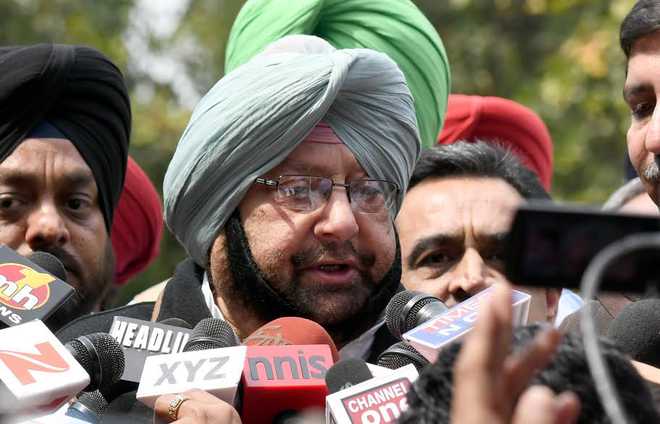Asia Pacific is quiet at present awaiting President Donald Trump’s true strategic emergence; uncertainty about rebalancing and pivot reinforce the belief that the US is yet unprepared to seriously address the issues concerning China. West Asia still steals the march in terms of glamour news such as the ongoing battle for Mosul and discussions on the future strategy of Islamic State (IS or Daesh).
However, a reading of 2017 thus far gives indicators of a bolder China, preparing itself for all options that the US strategy may adopt to address the future needs of its interests in the Asia Pacific. Although South Asia classically remains a peripheral zone for the Asia Pacific it is an important area of the Indo-Pacific region. For China, the Pacific Rim and waters are within reach with potential for greater control due to direct accessibility from the mainland. It is the Indian Ocean Rim (IOR) of South Asia where China’s access is not from the mainland but through belts and corridors. That zone is crucial because through it are aligned the sea lines of communication (SLsOC), China’s commercial and economic lifeline.
It is not usual to commence analyses with deductions but here it may be necessary. A flurry of reportage and commentary in Chinese media, especially the print, considered virtual official mouthpieces, appears to indicate that Beijing perceives an emboldened New Delhi due to the emerging US-India strategic partnership. The coming of Trump doesn’t appear to have diluted that even as details are being resolved. China’s original strategy the ‘String of Pearls’, hotly denied by it, was obviously a form of psychological encirclement of India through more active diplomatic outreach to the smaller states of South Asia. That, in the new dispensation, is being progressed to the next level which is obviously less benign and taking the shape of a ‘Head Vice’. Here is why such a deduction seems more plausible; with activities from Myanmar to Gwadar under the scanner.
Fourteenth November 2016 is an important date; on that day the operationalisation of the China Pakistan Economic Corridor (CPEC) appears to have commenced with movement of ships from Gwadar to other ports. The deepening of Pakistan’s strategic relationship with China goes up several notches and as the $50 billion project progresses the notches will convert to rungs. This will be notwithstanding the supposedly blood sucking 11 per cent interest on Chinese loans amounting to $35 billion. It may see transfer of land and assets of choice from Pakistan to China in a later timeframe. Gwadar also allows China to monitor US and Indian naval activity in the Persian Gulf and Arabian Sea, and Pakistan to dominate the energy routes to which it is a gateway. CPEC has done more for Pakistan’s strategic confidence than any other arrangement in 50 years. The same if not already evident in Pakistan’s diplomatic and military stance will manifest very noticeably as we proceed to the future.
Even more than the Sino-Pakistani strategic relationship it is China’s surge towards Sri Lanka that should draw attention. It had already established a hold during the later stages of the Eelam wars through supply of weapons worth almost $1 billion to the Sri Lankan armed forces. China had also won favour by securing the project for construction of a modern port at Hambantota and an ultra-modern international airport at Mattala in 2006. It was a project initially offered to India but not taken up by us due to questionable commercial viability. China grabbed it and after completion realises its commercial non-viability but immense strategic value for its own maritime presence in the Indian Ocean to oversee the security of its SLsOC.
Sri Lanka, beholden to Chinese support during the final stages of the war against the Liberation Tigers of Tamil Eelam (LTTE) and financially in no position to pay for the project has apparently bartered 80 per cent holding in the project and the nearby modern airport at Mattala. Till the time Mahinda Rajapaksa was in power the Chinese confidence was evident but with the arrival of President Maithripala Srisena the urgency that Sri Lanka felt towards making up with the West increased; this was primarily due to the human rights investigations that were being sought in relation to the final stages of the war against the LTTE. To regain some strategic space China has sent its defence minister on a recent visit with offers on renegotiating Hambantota, supply of military hardware to give Sri Lanka a more proactive role in patrolling the oceans and self-confidence to preserve its integrity. Details of the visit are yet emerging.
Switch to Bangladesh and we have the Chevron gas fields under sale with China’s Zhenhua Oil bidding for these. Zhenhua raises no eyebrows until it is revealed that it is a subsidiary of Norinco, the Chinese defence manufacturing company. The brow would raise even more once it was known that the gas fields in question are not in Southern Bangladesh but in the North Eastern part bordering Meghalaya, lower Assam and Tripura. India is not paranoid but surely land based presence of an adversary’s assets bordering your rear areas is not a position of comfort. Strategic literature emanating from Dhaka expresses deep interest in the Bangladesh-China-India-Myanmar (BCIM) corridor which has not received a very enthusiastic response from India. China’s involvement in development of port infrastructure in Bangladesh is but a matter of time as the latter cannot afford to drag its feet on this due to its own economic compulsions.
Maldives is more complex in complete contrast to the size of its geography. A Chinese firm has acquired “Feydhoo Finolhu” island on a 50 year lease for $4 million for developing a resort near capital city Male. This has now been supplemented by a Saudi Arabian initiative of investing $10 billion for wholesale acquisition of Faafu, 19 low-lying islands 120km south of Male. It would involve building seaports, airports, high-end housing and resorts and the creation of special economic zones. No doubt Chinese-Saudi Arabian cooperation is not something which has been contemplated as a security threat.
Yet, when viewed in the context of the increasing footprint of radical Islam in the islands, increasing visibility of Chinese Saudi defence cooperation becomes worrying for India’s strategic watchers. As per an interesting paper written by James Dorsey of the RSIS – “Riyadh sees its soft power in the Maldives as a way of convincing China it is Saudi Arabia – and not its regional rival, Iran – that is the key link in Beijing’s “One Belt, One Road” initiative to link Eurasia to the Middle East kingdom through Chinese-funded infrastructure”. That explains the concern for India.
Nepal’s relationship with India has been tentative for some time and even the goodwill re-established by the relief work after the disastrous earthquake of 2015 has not translated into any major strategic advantage. At the same time the deterioration of Indo-Nepalese relations over the new constitution and the rights of people of Indian origin has also not been fully exploited by China. There are pin-prick events such as a low-level military training exercise and continuing negotiations on project feasibility of a trans-national (Tibet to Nepal) railway project and power lines. The Belt-Road concept of President Xi Jing Ping has yet to emerge here but interest in the same has been expressed by Nepal; its future inclusion is a given.
Prime Minister Prachanda is likely to visit Beijing in the near future but China’s Defence Minister Chang Wanquan is already visiting Kathmandu after his visit to Sri Lanka. Prachanda’s visit may set the stage for the Chinese President’s visit to Kathmandu which was postponed last year following some unconfirmed reports of Beijing’s unhappiness over a lack of seriousness to push bilateral projects. That moment seems to have passed. China has recently pledged $8.3 billion in investment to Nepal – equivalent to nearly 40 per cent of its entire GDP. That staggering commitment dwarfed India’s offer of $317 million.
China’s Global Times wrote on 26 December 2016 – “It is neither realistic nor possible for India to always regard Nepal as its backyard and put pressure on Sino-Nepalese cooperation.” The deepening of Sino-Nepalese ties can therefore be taken for granted although the speed of the same may be a little slower.
On Bhutan the Global Times recently stated – “New Delhi is one of the crucial reasons why China and Bhutan, which is controlled by India economically and diplomatically, have not yet established diplomatic relations”. Summing up the discomfort of India it said – “If such tendencies in India continue, China will have to fight back, because its core interests will have been violated. This is not what we hope for, but the ball is in India’s court”.
It is obvious that China is concerned about India’s efforts to secure its neighbourhood and keep it within its realm of influence. There is an element of realpolitik in this. Its ambitious designs to achieve its interests mainly extend to securing SLsOC and the Belt and Road linkages and facilities. It has invested just too much time, energy and money into this and its sensitivity to all this will increase progressively. That is the reason why it is trying to send aggressive messages and enhancing the psychological squeeze on India. India’s stance has been correct and balanced. It has objected to issues such as the construction of the CPEC through the territory of Gilgit-Baltistan over which India lays claim. Norms of international conduct do not permit this but just as in the case of the South China Sea dispute China is beyond adherence to legal procedures.
The cold war between India and China with respect to influence in the South Asian region is already taking the shape of a New Great Game. This is likely to intensify. Maturity demands that rhetoric be reduced and engagement increased so that economic and diplomatic activities continue which perhaps will bring some compulsion to view each other’s interests with sensitivity. India cannot be pressurised regarding its partnerships with other countries which are based upon mutual and shared strategic interests. The New Great Game in the IOR of South Asia is likely to continue with increasing attempts at securing spheres of influence. There is a set of old military tactics which states that when surrounded hit at the enemy from outside the area of encirclement.
India must develop Chahbahar at the earliest and convince the US to support the India-Afghanistan-Iran initiative as it makes ample sense. In Sri Lanka, it must seek ways of enhancing its presence and supporting the Sri Lankan government with more economic initiatives. Handling Maldives has been a challenge but control over its strategic decisions must be exercised with consultation. Our relationship with Bangladesh is strong and progressing; Prime Minister Sheikh Hasina is visiting India in April 2017. Her visit is one of the most strategically important visits in recent months and must help in developing long-term trust and faith between countries which are considered natural partners. With Nepal an exercise of a degree of strategic independence by it is inevitable. The question is how that can be managed to advantage. Lastly, the BCIM Economic Corridor needs to be analysed more deeply for hidden agenda. The overall benefit to the North East may assist in stabilising the region through the economics route.
What India has to fully ensure is that the String of Pearls do not convert to a Head Vice which will squeeze it out of options.







































































